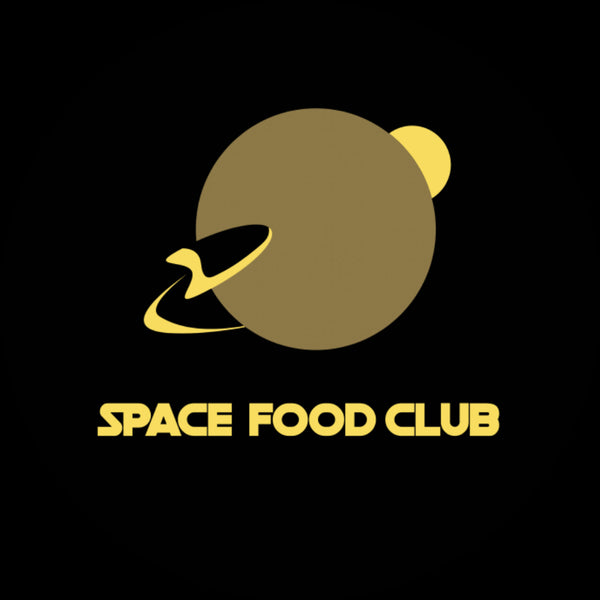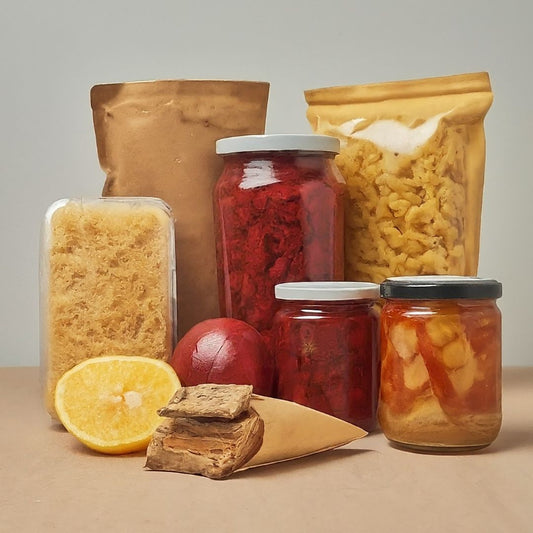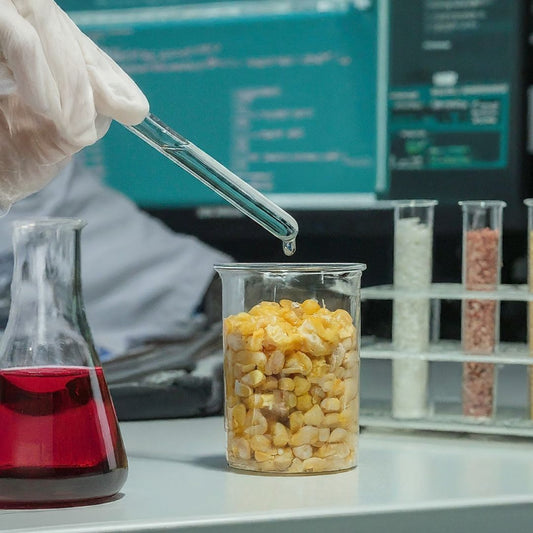Food Nanotechnology
Share
1. Nano-Encapsulation for Better Nutrient Delivery: Nano-encapsulation protects nutrients from degrading and makes them easier for the body to absorb. For example, sensitive nutrients like omega-3 fatty acids are encapsulated in tiny protective shells that keep them stable in products like milk or fortified drinks. This also helps fat-soluble vitamins (like A, D, and E) become more bioavailable.
2. Nano-Emulsions to Improve Texture and Flavor: Nano-emulsions are tiny droplets that help disperse one liquid in another, creating smoother textures and enhanced flavors. In low-fat salad dressings, for instance, nano-emulsions replicate the creamy mouthfeel of high-fat versions without added fat, improving taste and satisfaction.
3. Antimicrobial Nanoparticles in Packaging for Safety: Packaging materials can be infused with nanoparticles like silver or zinc oxide to prevent bacterial growth. For example, silver nanoparticles in meat packaging kill bacteria, reducing spoilage and extending shelf life. This is especially valuable for perishable products like dairy and meats.
4. Nanosensors to Monitor Food Freshness: Nanosensors are tiny, sensitive devices that can detect gases or pathogens from food spoilage. In meat packaging, for example, a nanosensor might change color if spoilage gases like ammonia are present, signaling if the product is no longer fresh and safe to eat.
5. Nanocoatings for Packaging Protection: Nanoclays and other coatings are applied to packaging films to keep moisture and oxygen out, which helps preserve the texture and freshness of snacks like chips or cereals. Some of these coatings are also biodegradable, reducing the environmental impact of packaging waste.
In short, food nanotechnology allows for better nutrient delivery, improved taste, extended freshness, and safer food through innovative packaging, helping to improve both quality and sustainability in the food industry.
2. Nano-Emulsions to Improve Texture and Flavor: Nano-emulsions are tiny droplets that help disperse one liquid in another, creating smoother textures and enhanced flavors. In low-fat salad dressings, for instance, nano-emulsions replicate the creamy mouthfeel of high-fat versions without added fat, improving taste and satisfaction.
3. Antimicrobial Nanoparticles in Packaging for Safety: Packaging materials can be infused with nanoparticles like silver or zinc oxide to prevent bacterial growth. For example, silver nanoparticles in meat packaging kill bacteria, reducing spoilage and extending shelf life. This is especially valuable for perishable products like dairy and meats.
4. Nanosensors to Monitor Food Freshness: Nanosensors are tiny, sensitive devices that can detect gases or pathogens from food spoilage. In meat packaging, for example, a nanosensor might change color if spoilage gases like ammonia are present, signaling if the product is no longer fresh and safe to eat.
5. Nanocoatings for Packaging Protection: Nanoclays and other coatings are applied to packaging films to keep moisture and oxygen out, which helps preserve the texture and freshness of snacks like chips or cereals. Some of these coatings are also biodegradable, reducing the environmental impact of packaging waste.
In short, food nanotechnology allows for better nutrient delivery, improved taste, extended freshness, and safer food through innovative packaging, helping to improve both quality and sustainability in the food industry.





